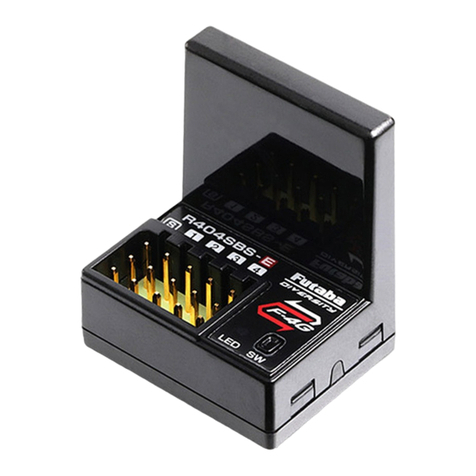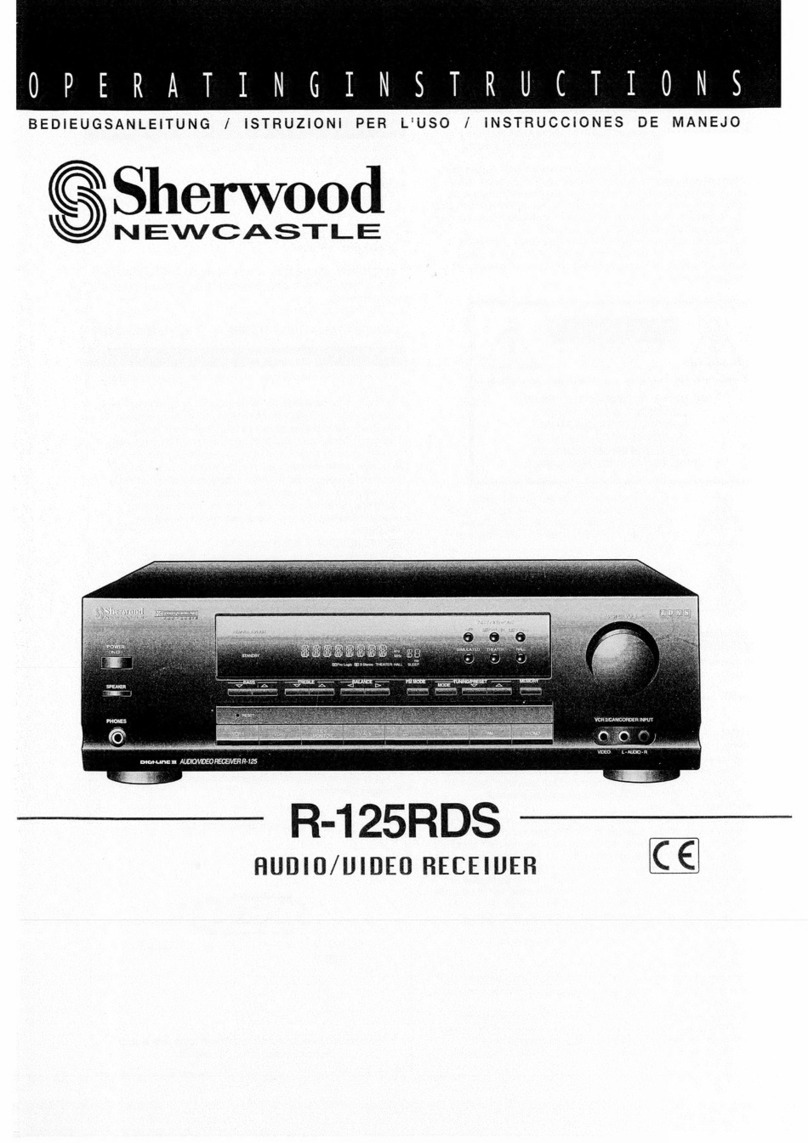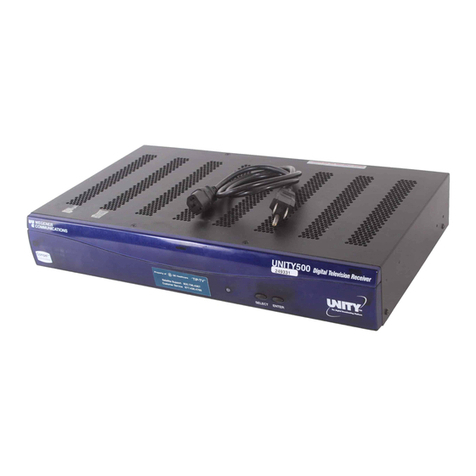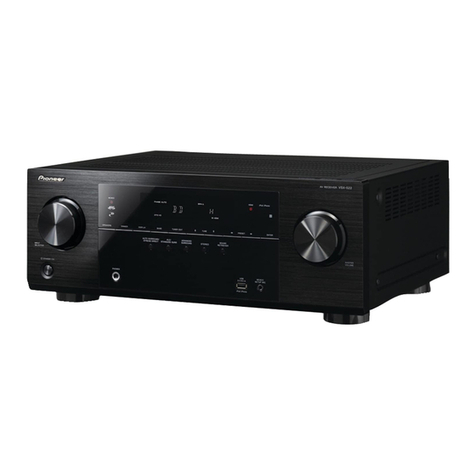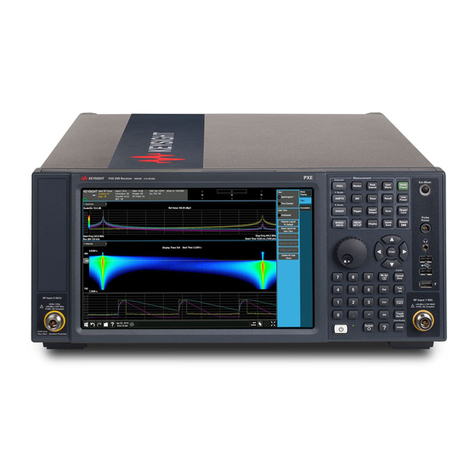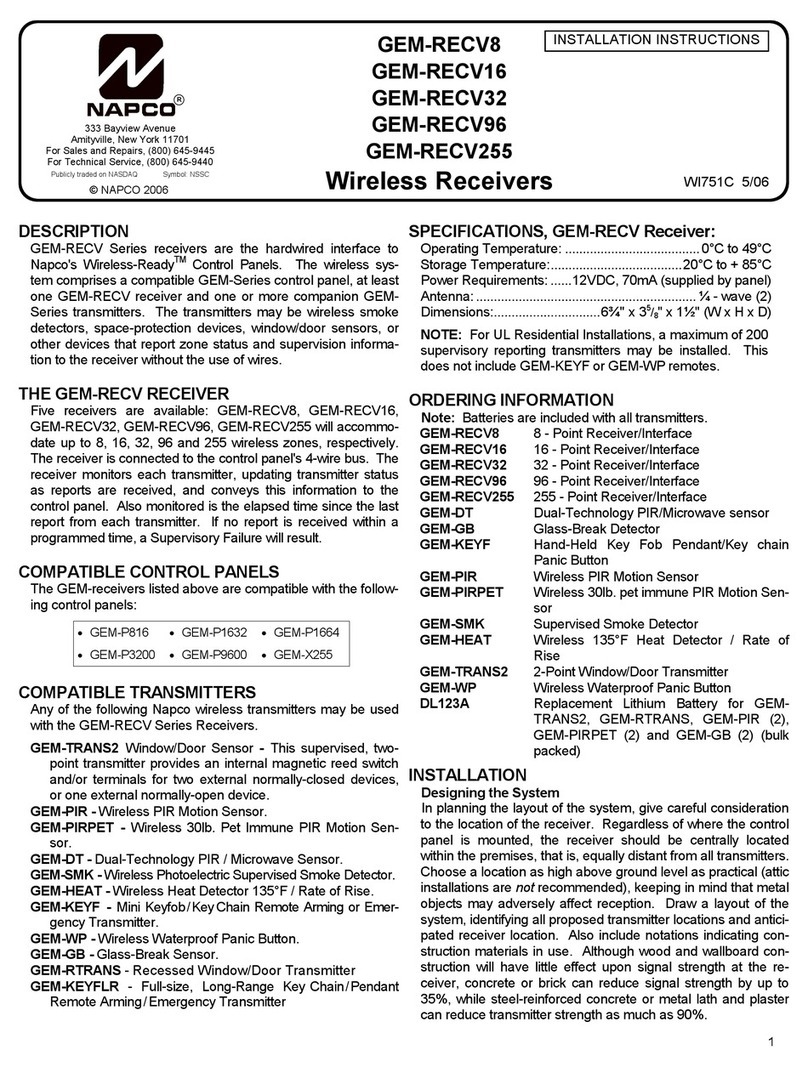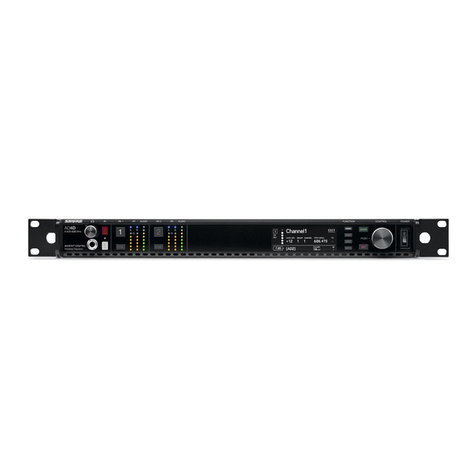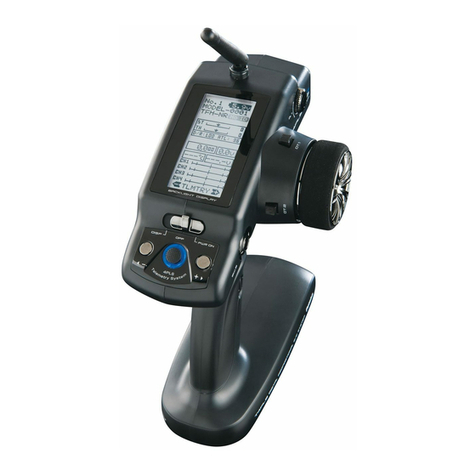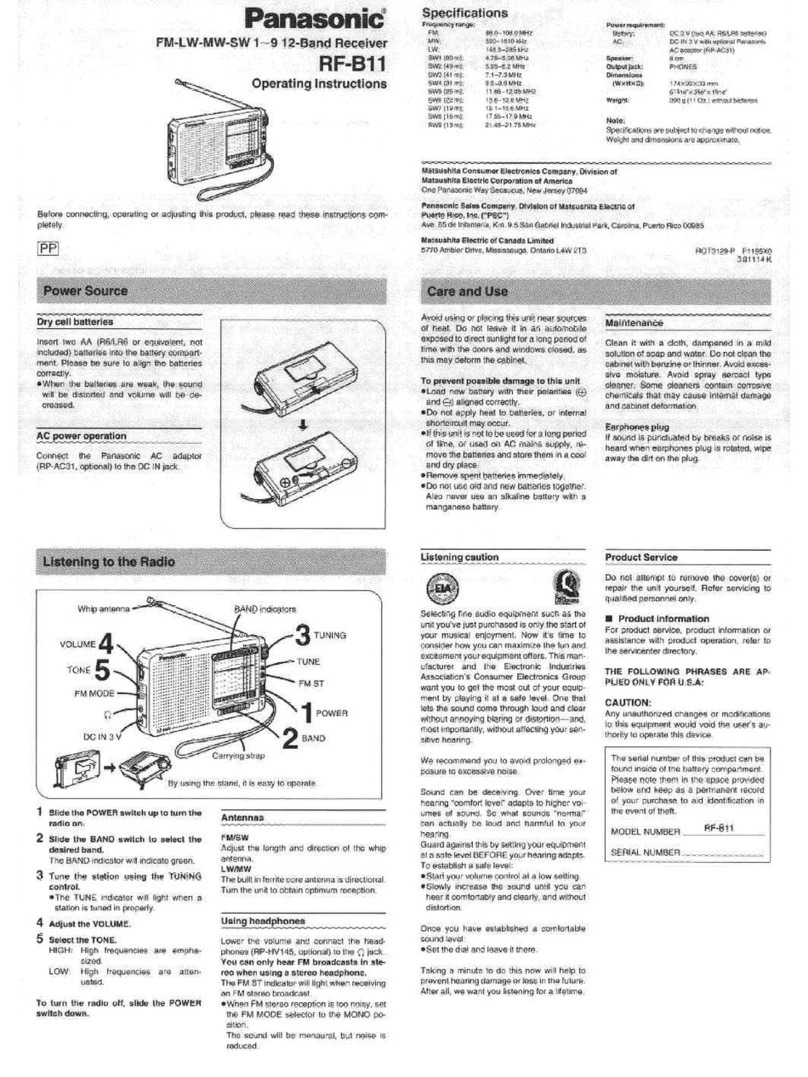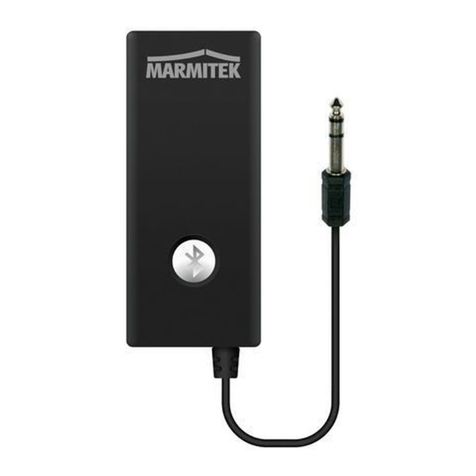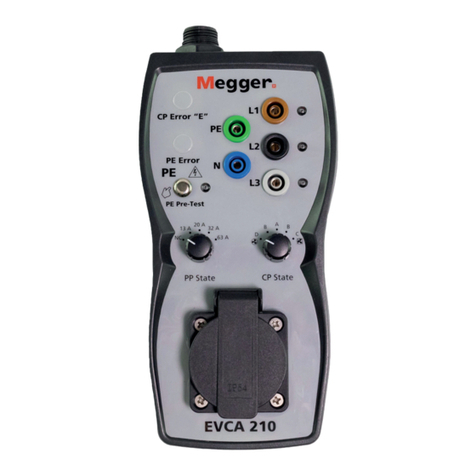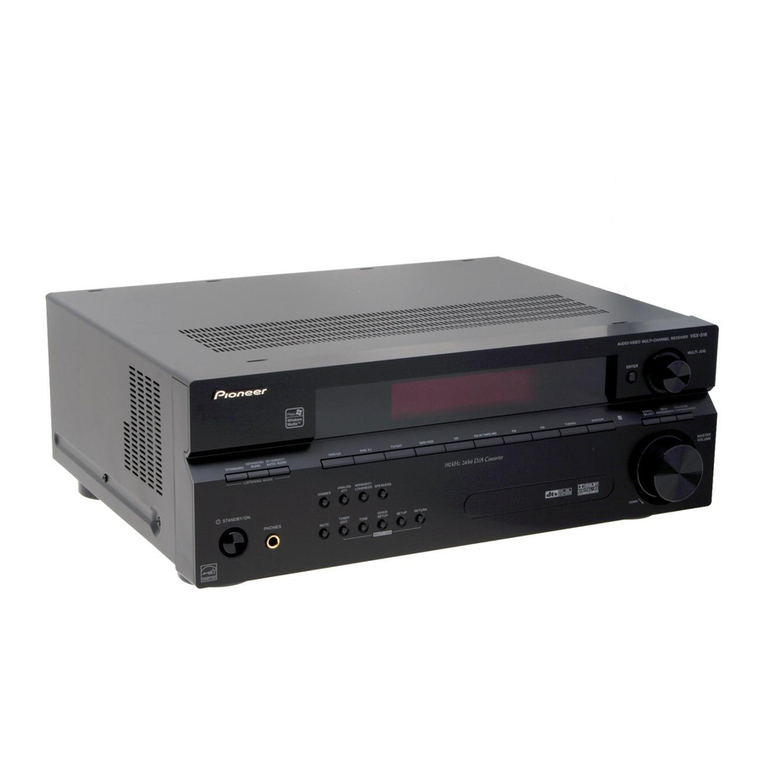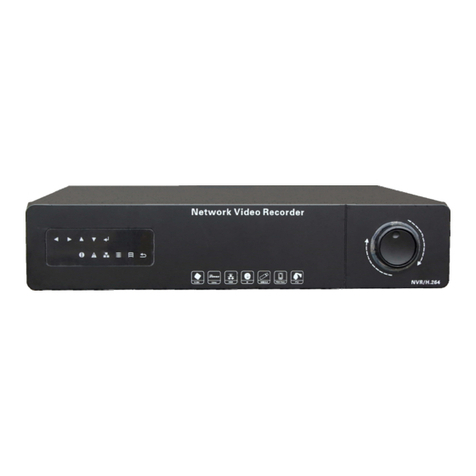Goldak Goldak 2310 User manual


TT
TTRR
RRII
IIAA
AADD
DD™™
™™ MM
MMOO
OODD
DDEE
EELL
LL 22
2233
3311
1100
00 DD
DDII
IIGG
GGII
IITT
TTAA
AALL
LL LL
LLOO
OOCC
CCAA
AATT
TTII
IINN
NNGG
GG SS
SSYY
YYSS
SSTT
TTEE
EEMM
MM OO
OOPP
PPEE
EERR
RRAA
AATT
TTII
IINN
NNGG
GG MM
MMAA
AANN
NNUU
UUAA
AALL
LL
Copyright© 2004 Goldak Inc.
All rights reserved
PP
PPRR
RROO
OODD
DDUU
UUCC
CCTT
TT UU
UUSS
SSAA
AAGG
GGEE
EE AA
AAGG
GGRR
RREE
EEEE
EEMM
MMEE
EENN
NNTT
TT
By using this product and its associated materials,provided by Goldak Inc., the user agrees to the following terms:
LL
LLII
IIMM
MMII
IITT
TTEE
EEDD
DD WW
WWAA
AARR
RRRR
RRAA
AANN
NNTT
TTYY
YY
The electronic instrumentation and accompanying materials are provided “as is”,with a limited warranty of one (1)
year on material defects and workmanship.There is no warranty provided or implied regarding the merchantability
and fitness of this product for a particular purpose.
Goldak Inc.does NOT warrant that the features and capabilities of this product will meet your requirements,or that
operation of this product will be uninterrupted or error free.
The entire risk as to the use,quality,and performance of this product is with you,the user.Should the product prove
to be defective,you,and not Goldak Inc., assume the entire cost of any necessary repair.
However,Goldak Inc.DOES warrant that the electronic instrumentation provided is furnished free from defects in
materials and workmanship under normal use for a period of one (1) year from the date of delivery to you as
evidenced by a copy of your invoice/receipt.
Goldak Inc.’s entire liability and your exclusive remedy as to the product provided (subject to you returning the
product to Goldak Inc.or to an authorized dealer with a copy of your invoice/receipt) will be the repair or
replacement of any defective portion of the product,up to and including the entire product.If Goldak Inc.or an
authorized dealer is unable to repair or replace the product under the terms of this warranty,then the purchase price
will be refunded.
DD
DDII
IISS
SSCC
CCLL
LLAA
AAII
IIMM
MMEE
EERR
RRSS
SS
Goldak Inc.assumes no liability pertaining to the accuracy of the results derived from the use of this product.
Because of the many unknowable and uncontrollable variables in locating job situations,apparent results when using
this product may be erroneous and should not be taken as absolute.Ultimate responsibility for interpretation of all
results reported by this product rests on the user alone.
Goldak Inc.reserves the right to modify this and all of its products for the sake of improvement at all times.
LL
LLII
IIMM
MMII
IITT
TTAA
AATT
TTII
IIOO
OONN
NN OO
OOFF
FF LL
LLII
IIAA
AABB
BBII
IILL
LLII
IITT
TTYY
YY
IN NO EVENT WILL GOLDAK INC.BE LIABLE FOR ANY DAMAGES,INCLUDING LOSS OF PROPERTY,LOST
PROFITS,COST OF COVER OR OTHER SPECIAL,INCIDENTAL,CONSEQUENTIAL OR INDIRECT DAMAGES ARISING
FROM THE USE OF THIS PRODUCT OR ACCOMPANYING MATERIALS,HOWEVER CAUSED AND ON ANY THEORY
OF LIABILITY.THIS LIMITATION WILL APPLY EVEN IF GOLDAK INC.OR AN AUTHORIZED DEALER HAS BEEN
ADVISED OF THE POSSIBILITY OF SUCH DAMAGE.YOU ACKNOWLEDGE THAT PURCHASE AND USE OF THIS
PRODUCT REFLECTS THIS ALLOCATION OF RISK.SOME JURISDICTIONS DO NOT ALLOW LIMITATION OR
EXCLUSION OF LIABILITY FOR INCIDENTAL OR CONSEQUENTIAL DAMAGES,SO THE ABOVE LIMITATION MAY
NOT APPLY TO YOU.
GG
GGEE
EENN
NNEE
EERR
RRAA
AALL
LL
This Agreement will be governed by the laws of the State of California,U.S.A.In any dispute arising out of this
Agreement,Goldak Inc.and you each consents to the jurisdiction of both the state and federal courts of Los Angeles
County,California,U.S.A.
This Agreement is the entire agreement between us and supercedes any other communications with respect to the
product and accompanying materials.
If any provision of this Agreement is held to be unenforceable,then the remainder of this agreement shall continue in
full force and effect.
If you have any questions,please contact:
Goldak Inc., (818) 240-2666
e-mail: sales @ goldak.com
547 West Arden Ave.
Glendale,CA 91203
All trade names referenced are the trademark or registered trademark of their respective holder.
Goldak and TRIAD™ Digital Locating System are trademarks of Goldak Inc.

TT
TTAA
AABB
BBLL
LLEE
EE OO
OOFF
FF CC
CCOO
OONN
NNTT
TTEE
EENN
NNTT
TTSS
SS
11
11 II
IINN
NNTT
TTRR
RROO
OODD
DDUU
UUCC
CCTT
TTII
IIOO
OONN
NN p.1
22
22 EE
EEQQ
QQUU
UUII
IIPP
PPMM
MMEE
EENN
NNTT
TT FF
FFEE
EEAA
AATT
TTUU
UURR
RREE
EESS
SS p.2
33
33 AA
AACC
CCCC
CCEE
EESS
SSSS
SSOO
OORR
RRII
IIEE
EESS
SS p.7
44
44 OO
OOPP
PPEE
EERR
RRAA
AATT
TTII
IINN
NNGG
GG DD
DDEE
EETT
TTAA
AAII
IILL
LLSS
SS
••
•• MM
MMoo
oodd
ddee
eellll 22
2233
3311
1100
00 RR
RRee
eecc
ccee
eeiiiivv
vvee
eerr
rr p.11
••
•• MM
MMoo
oodd
ddee
eellll 22
2233
33XX
XX TT
TTrr
rraa
aann
nnss
ssmm
mmiiiitt
tttt
ttee
eerr
rr CC
CCaa
aass
ssee
ee p.18
55
55 LL
LLII
IINN
NNEE
EE TT
TTRR
RRAA
AACC
CCII
IINN
NNGG
GG p.21
66
66 SS
SSOO
OONN
NNDD
DDEE
EE LL
LLOO
OOCC
CCAA
AATT
TTII
IINN
NNGG
GG p.27
77
77 UU
UUSS
SSII
IINN
NNGG
GG PP
PPEE
EEAA
AAKK
KK &&
&& NN
NNUU
UULL
LLLL
LL MM
MMOO
OODD
DDEE
EESS
SS p.30
••
•• AA
AAPP
PPPP
PPEE
EENN
NNDD
DDII
IICC
CCEE
EESS
SS p.33
AA
AA::
:: AA
AADD
DDVV
VVAA
AANN
NNCC
CCEE
EEDD
DD LL
LLOO
OOCC
CCAA
AATT
TTII
IINN
NNGG
GG TT
TTEE
EECC
CCHH
HHNN
NNII
IIQQ
QQUU
UUEE
EESS
SS p.35
BB
BB::
:: CC
CCAA
AARR
RREE
EE AA
AANN
NNDD
DD MM
MMAA
AAII
IINN
NNTT
TTEE
EENN
NNAA
AANN
NNCC
CCEE
EE p.49
CC
CC::
:: TT
TTRR
RROO
OOUU
UUBB
BBLL
LLEE
EESS
SSHH
HHOO
OOOO
OOTT
TTII
IINN
NNGG
GG p.52
DD
DD::
:: SS
SSAA
AAFF
FFEE
EETT
TTYY
YY p.55
EE
EE::
:: GG
GGLL
LLOO
OOSS
SSSS
SSAA
AARR
RRYY
YY OO
OOFF
FF TT
TTEE
EERR
RRMM
MMSS
SS p.56

II
IINN
NNTT
TTRR
RROO
OODD
DDUU
UUCC
CCTT
TTII
IIOO
OONN
NN
Since Goldak Inchas manufactured topoftheline underground
locating equipmentWith the introduction of the Triad Model Digital
LocatorGoldak has set a new standard in portable locators
The Triad series of locators are designed with one key goal in mind: to
simplify underground locating tasks for the userThe advanced signal
detection system and stateoftheart digital electronics work together to
make these tasks straightforwardintuitiveand quickly managedThe
batterypowered Model Receiver is lightweight and ergonomically
balancedand folds into a compact storage configurationActivated and
controlled by a single triggerthe Receiver aides the operator in locating
underground lines (pipescablesetc) or coiltype transmitters (aka
"sondes") with easytounderstand visual and audio cues
Menus that are designed to be intuitive and selfteaching make the Model
easy to operate regardless of one’s level of experiencebeginner to
expertWith features such as automatic tuning and gain controlautomatic
depth reportingmultiple frequenciesconstant numerical responsesearch
direction indicatorsand morethe user will recognize that the Model
Digital Locator is truly one of a kind
Triad Locating System
The entire locating system consists of the Model Receiverthe Model
X Transmitter Caseand miscellaneous accessoriesThe standard
accessories included with the basic system are a directconnection cable
(DCC)a ground rodand operating instructionsOptional accessories are
numerousand can be purchased to perform specific kinds of jobs
Before you get started…
It is important that the operator become familiar with this manual and with
other basic safety recommendations (Appendix D) prior to using the Triad
locating systemAlsothe operator should make sure that batteries are
installed in both the Receiver and the X Transmitter Caseand that the
batteries are in good conditionTo access the battery compartments for the
Receiver and the X Transmitterplease follow the instructions in
Appendix B“Care and Maintenance”of this manual

EE
EEQQ
QQUU
UUII
IIPP
PPMM
MMEE
EENN
NNTT
TT FF
FFEE
EEAA
AATT
TTUU
UURR
RREE
EESS
SS
MM
MMOO
OODD
DDEE
EELL
LL
DD
DDII
IIGG
GGII
IITT
TTAA
AALL
LL LL
LLOO
OOCC
CCAA
AATT
TTII
IINN
NNGG
GG RR
RREE
EECC
CCEE
EEII
IIVV
VVEE
EERR
RR
The primary component of the Triad Locating System is the ReceiverIt
has been designed to be lightweightergonomicand easytouseTaking
advantage of breakthrough technologythe Receiver provides realtime
intuitive information to the user that makes locating jobs simple to
understandThe only control is a singlegunstyle triggerwhich gives the
user quick access to the Receiver’s featuresA crisp LCD display screen and
robust speaker output provide the user with the intuitive information needed
to make quick locatesRefer to the graphic below and the opposing page to
understand more about the physical features of the Receiver

DD
DDEE
EESS
SSCC
CCRR
RRII
IIPP
PPTT
TTII
IIOO
OONN
NN OO
OOFF
FF FF
FFEE
EEAA
AATT
TTUU
UURR
RREE
EESS
SS::
:: MM
MMOO
OODD
DDEE
EELL
LL
RR
RREE
EECC
CCEE
EEII
IIVV
VVEE
EERR
RR
DD
DDiiiiss
sspp
ppllllaa
aayy
yy
A sharphighcontrast LCD screen that provides visual
feedback to the user during set up and locating operations
PP
PPiiiiss
sstt
ttoo
oollll GG
GGrr
rriiiipp
pp aa
aann
nndd
dd TT
TTrr
rriiiigg
gggg
ggee
eerr
rr
The pistol grip is molded for comfort and
positioned for ergonomic balance while operating the Receiver
The trigger is positioned comfortably for gunstyle operationThe
trigger is the only control feature on the entire instrumentPlease
read Operating Details for more information about using the trigger
SS
SSpp
ppee
eeaa
aakk
kkee
eerr
rr
The speaker provides strong audio feedback to the user
during operationThe volume of the speaker output is usercontrolled
FF
FFoo
oolllldd
ddiiiinn
nngg
gg AA
AAnn
nntt
ttee
eenn
nnnn
nnaa
aa AA
AArr
rrmm
mm
While being operatedthe receiver is
configured in a slenderbalanced package that is easy to wieldThis is
the “unfolded” positionTo store the receiverit must first be
collapsed (folded)To do thisthe antenna arm swings around the
swivel point ° to the folded position
““
““PP
PPoo
ooiiiinn
nntt
ttee
eerr
rr””
”” AA
AAnn
nntt
ttee
eenn
nnnn
nnaa
aa
Mounted on the end of the folding arm is the
“pointer” antennaso called because it effectively points directly at the
object being located
BB
BBaa
aatt
tttt
ttee
eerr
rryy
yy CC
CCoo
oomm
mmpp
ppaa
aarr
rrtt
ttmm
mmee
eenn
nntt
tt
Found on the underside of the receiverthis
easyaccess springloaded compartment houses the power supply for
the ReceiverThe receiver requires eight () “AA” size alkaline
batteries to operate (carbon batteries NOT recommended)
CC
CCoo
oonn
nnnn
nnee
eecc
cctt
ttiiiioo
oonn
nn PP
PPaa
aann
nnee
eellll
Also found on the underside of the receiverthis
panel area provides plugin access for various accessories
(a) Headset JackFound in the middle
of the panelthis jack allows for an
ohm headset with a mm plug
to be connectedWhen the
headset is plugged inthe builtin
speaker no longer emits a sound
(b) Auxiliary Antenna PortWith the
appropriate adapterthis port
allows the user to connect up to two external antennas into the
ReceiverSome examples of such antennas are a cable clamp
(for identifying a specific cable among a grouping of cables) and
an enhancedsensitivity detection antenna
(c) Communications PortThis port allows the receiver to
communicate with external devices via standard RS protocol
(d) ResetThis is a small pinpoint hole in the panel that allows the
user to reset the ’s internal computerusing for instance the
open end of a paper clip

MM
MMOO
OODD
DDEE
EELL
LL
XX
XX DD
DDII
IIGG
GGII
IITT
TTAA
AALL
LL TT
TTRR
RRAA
AANN
NNSS
SSMM
MMII
IITT
TTTT
TTEE
EERR
RR CC
CCAA
AASS
SSEE
EE
Built into the carrying case for the Model Receiver is a powerful and
versatile lineenergizing transmitterthe Model XIt has the capability to
energize lines both by direct hookup and by an inductive fieldIt provides
flexible power level and multiple frequency options (standard and custom)
including three for inductive energizingAlsothe X control panel provides
a PULSE optionfor identifying the transmitting signal in difficult tracing
situations*A detailed description of the transmitter case features follows
* PULSE is included for compatibility with receivers other than the It should NOT be used with
the Model Receiver

DD
DDEE
EESS
SSCC
CCRR
RRII
IIPP
PPTT
TTII
IIOO
OONN
NN OO
OOFF
FF FF
FFEE
EEAA
AATT
TTUU
UURR
RREE
EESS
SS::
:: MM
MMOO
OODD
DDEE
EELL
LL
XX
XX TT
TTRR
RRAA
AANN
NNSS
SSMM
MMII
IITT
TTTT
TTEE
EERR
RR
CC
CCoo
oonn
nntt
ttrr
rroo
oollll PP
PPaa
aann
nnee
eellll
This panellocated under the left latch cover of the
casecontains all of the buttons used to activate and control the
transmitterAlso located on this panel is the LCD displaywhich
reports the modethe frequencythe output leveland other
information
ON ButtonPress this to activate the transmitter
OFF ButtonPress this to deactivate the transmitter
Select ButtonThis button advances the adjustment mode
Up ButtonThis button advances to the next highest setting
(eg frequency or power level)
Down ButtonThis button selects the next lowest setting
PULSE ButtonPress this button to cause the signal to pulse
(see note on previous page)Hold the button for seconds to
display the status of the internal battery
OO
OOuu
uutt
ttpp
ppuu
uutt
tt PP
PPaa
aann
nnee
eellll
Located under the right latch coverthis panel contains
three jacks that are used for signal output and power input
Direct Output JacksThese are labeled “SIGNAL[]” and
“SIGNAL[]”The jacks are for standard /” mono phone
plugs (typically on a Direct Connection Cable)The SIGNAL[]
jackwhen used by itselfoutputs twice the standard signal
level of the SIGNAL[] jackWhen used in conjunction with
the SIGNAL[] jackthe SIGNAL[] jack outputs a standard
signal level
Auxiliary DC Power InputThis jack takes a standard mm
DC power input plugwhich is typically used on AC/DC wall
transformer power suppliesThe rated voltage of the external
supply should be no higher than V and no lower than V
II
IInn
nntt
ttee
eerr
rrnn
nnaa
aallll BB
BBaa
aatt
tttt
ttee
eerr
rryy
yy
The battery compartment is inside the caseon the
half where the Receiver is storedThe compartment takes a
Volt Alkaline CCell removable moduleTo access the batteryunscrew
the two thumbscrews that hold the battery cover in place
LL
LLaa
aatt
ttcc
cchh
hh CC
CCoo
oovv
vvee
eerr
rrss
ss
These secure the instrument in the closed position while
protecting the Control and Output panels
SS
SSuu
uupp
ppee
eerr
rr
II
IInn
nndd
dduu
uucc
cctt
ttiiiivv
vvee
ee CC
CCaa
aapp
ppaa
aabb
bbiiiilllliiiitt
ttyy
yy
A special patented antenna system is built
into the transmitter caseWith this special antennathe X
transmitter is the most powerful inductive line energizer available


AA
AACC
CCCC
CCEE
EESS
SSSS
SSOO
OORR
RRII
IIEE
EESS
SS
SS
SSTT
TTAA
AANN
NNDD
DDAA
AARR
RRDD
DD AA
AACC
CCCC
CCEE
EESS
SSSS
SSOO
OORR
RRII
IIEE
EESS
SS
[[
[[
]]
]]
DD
DDiiiirr
rree
eecc
cctt
tt
CC
CCoo
oonn
nnnn
nnee
eecc
cctt
ttiiiioo
oonn
nn CC
CCaa
aabb
bbllllee
ee ((
((DD
DDCC
CCCC
CC))
))
Use the DCC to inject a signal directly
(via electrical contact) into the target lineAdvantage: better than
using inductive mode for assuring
that target line is only thing
energizedAlsoeliminates air
coupled signals that come from the
transmitter case itselfDisadvantage:
part of line must be electrically
exposed to use the DCCwhich
sometimes is impracticalAlso
requires adequate ground return to
cause strong signal on line
[[
[[
]]
]]
GG
GGrr
rroo
oouu
uunn
nndd
dd RR
RRoo
oodd
dd
This simple accessory can be used to
establish good grounding for direct connection to
a lineAdvantage: establishes better ground
return when used than when not used
Disadvantage: must have penetrable terrain to
use it
OO
OOPP
PPTT
TTII
IIOO
OONN
NNAA
AALL
LL AA
AACC
CCCC
CCEE
EESS
SSSS
SSOO
OORR
RRII
IIEE
EESS
SS
[[
[[
]]
]]
GG
GGCC
CC
II
IInn
nndd
dduu
uucc
cctt
ttiiiivv
vvee
ee CC
CCllllaa
aamm
mmpp
pp
This is the noncontact version of the DCCUse
the Inductive Clamp to energize the target line by plugging into a Model
X direct output jack and clamping around a portion of the line
Advantages: no electrical contact
point needed; very effective at
energizing the target line only
even in congested areas
Disadvantages: part of line must
be mechanically exposed enough
to get clamp around it; limited
target line diameter (up to about
” OD)
[[
[[
]]
]]
TT
TTrr
rraa
aann
nnss
ssmm
mmiiiitt
tttt
ttiiiinn
nngg
gg SS
SSoo
oonn
nndd
ddee
eess
ss
These are smallcapsuletype transmitters that
may be located only in the immediate area surrounding the transmitter
They are usually inserted inside nonmetallic lines in order to pinpoint a
location in the linebut can be used for a variety of applications
Typicallytransmitting sondes are batteryoperated and watertight
(a) The
Model “Flusher”
is a
watertight capsule transmitter
designed specifically to be flushed
down a toilet or a sewer cleanoutThey
are most often used for locating septic
tanks

(b) The
Model “Bullet”
is also watertightand is
small and streamlined to fit into nonmetallic
conduits down to /” in diameterNormallythe
“Bullet” is attached to a fishtape and fed down
empty conduit linesHoweverit can be used in a
number of applications
(c) The
Model “TapeOn”
is a watertight
roughly cylindrical transmitter designed
to attach “piggyback” on a sewer rod
sewer snakehydrocleaneror camera
reel
(d) The
Model “Navigator”
is the largest and most powerful of
the insertable transmitters and
is typically used in city main
sewer lines
(e) The
Model SRK
is a small but powerful transmitter that is
designed to provide greater flexibility in locating jobs while
maintaining good locating rangeDesigned for inline attachment
(sewer snakespush rods
etc)the SRK is
streamlined to go where
many other transmitting
sondes cannot
[[
[[
]]
]]
HH
HHee
eeaa
aadd
ddss
ssee
eett
tt
The Receiver includes a
mm jack to accommodate this accessory
an Ω walkmanstyle headsetOther
headsets with compatiple plugs and
ohmages may also be used
[[
[[
]]
]]
EE
EExx
xxtt
ttee
eerr
rrnn
nnaa
aallll AA
AACC
CC PP
PPoo
ooww
wwee
eerr
rr SS
SSuu
uupp
pppp
ppllllyy
yy
This twoprong
AC wall socket adapter that supplies
unlimited power to the X Transmitter
This is especially useful when the X drives
heavy loads at audio frequencies for long
duration[Specs: Input VAC Hz
W; Output VDC @ Amp; Plug
dimension ø x mm]
[[
[[
]]
]]
CC
CCaa
aarr
rr BB
BBaa
aatt
tttt
ttee
eerr
rryy
yy AA
AAdd
ddaa
aapp
pptt
ttee
eerr
rr
An external power supply cable that plugs into a
standard automobile cigarette lighter socketFully extendedit is
feet in lengthand comes with the mm plug required by the X DC
input panelLike the AC
power supply aboveit is
recommended to be used in
lowfrequencyhighoutput
applications

[[
[[
]]
]]
AA
AAcc
cccc
ccee
eess
ssss
ssoo
oorr
rryy
yy BB
BBaa
aagg
gg
A canvas pouch
that mounts neatly on the
outside face of the transmitting
caseThis bag provides flexible
and easily accessible storage for
all of your instrument
accessories
[[
[[
]]
]]
AA
AAlllltt
ttee
eerr
rrnn
nnaa
aatt
ttee
ee AA
AAnn
nntt
ttee
eenn
nnnn
nnaa
aa AA
AAdd
ddaa
aapp
pptt
ttee
eerr
rr
This special adapter plugs into the antenna
port on the underside of the ReceiverIt converts the port input to
two standard /” jacksthat may be used for a variety of special
applications


OO
OOPP
PPEE
EERR
RRAA
AATT
TTII
IINN
NNGG
GG DD
DDEE
EETT
TTAA
AAII
IILL
LLSS
SS
MM
MMOO
OODD
DDEE
EELL
LL
RR
RREE
EECC
CCEE
EEII
IIVV
VVEE
EERR
RR
Trigger Usage
The first important step in learning how to use the Locating Receiver is
to understand and master the simple functions of the gunstyle trigger
Having learned the two basic trigger commandsthe user will be well on the
way to properly and efficiently using this locator
The trigger functions much like the button on a computer mouseThe two
trigger commands are CC
CCLL
LLII
IICC
CCKK
KK and CC
CCLL
LLII
IICC
CCKK
KK
HH
HHOO
OOLL
LLDD
DD:
To CC
CCLL
LLII
IICC
CCKK
KKpull and quickly release the triggerIn generala CLICK
will turn the Receiver on and off (when no menus are active);
alsowhen a menu or control strip is activea CLICK will always
advance to the next choice on the menu or control strip
To CC
CCLL
LLII
IICC
CCKK
KK
HH
HHOO
OOLL
LLDD
DDpull the trigger and hold it in until the desired
action takes place (this takes a halfsecond or so)CLICKHOLD
always
chooses the highlighted choice in the active menu/control
strip
Mastering the trigger functions is not difficultand knowing them is essential
in using the receiver efficientlyFor your convenience these instructions for
trigger usage are summarized on the triangular serial number label on the
underside of the Receiver
Preparing to Use the Receiver
When removed from the casethe Receiver will be in its (a) compact
storage configurationTo unfold it(b) swing the lower antenna arm in a
clockwise direction ° about the swiveluntil it is fully extended in its
operating position
Activation
To turn on the Receiversimply CLICK the
triggerUpon startupthe receiver display will
momentarily present the Goldak logoThe logo
screen will scroll openand the following control
screen will be presented:

At the top of the screen you will see
a memory strip indicating the most
recent device set up (ie that was
used on the previous locating job)
At this timeyou may either
continue to locate with the stored
settings (RESUME)or opt for new
settings (NEW SET UP)Notice that
a small timer icon appears in the
upper right corner of the screen
When this graphic “timesout”any
active menu will be removed from
the screenand the receiver will
return to its original operating
settings
To RESUME: Verify that the icon is pointing at “RESUME” in the
startup menuthen CLICKHOLDThe receiver is now ready
to locate(NOTE: the icon will always point at
“RESUME” at startupmaking it very easy to continue with
an ongoing job)
NEW SET UP: To opt for new settingsCLICK to advance the icon to
“NEW SET UP”then CLICKHOLDThe display will then
immediately present the “Set Frequency” screen shown
below
SETTING THE FREQUENCY
As the menu graphic to the right
indicatesthere are three different ways
to set the receiver’s locating frequency:
by scanning for itby selecting it from a
catalogor by selecting the “passive”
mode
Setting Frequency by Scanning
Using the “BY SCAN” Option will
automatically tune the Receiver to
the exact frequency of the transmitting
source (ie Model X Transmitter
another active line energizera “sonde”
or a camera head)To do thishold the receiver with the pointer antenna
aimed directly at the active transmitting sourceand held about to feet
away from itCLICK the icon to point to “BY SCAN” and then CLICK
HOLD
You will see the word “SCANNING” flashing
on the screen while the receiver scans for
the active transmitterIf SCAN fails to
detect anythingyou will here a lowpitched
toneand the will return to its previous
operating mode

When scanning for a signal that has been set up by a DIRECT connectionif
SCAN fails to work by holding the pointer around the supposed area of the
energized linethen try draping the red lead from the DCC over the pointer
antenna and reattempting SCANThis will guarantee that the tracing signal
will be detected
After a successful scanthe display
will report as shown to the left
Having detected a signal from an
active transmitterthe receiver will
automatically present the “SET
LOCATING MODE” menuTo
continuefollow the instructions
for setting the locating mode given
on the following page of this
manualIf you are unable to SCAN
successfullyplease refer to
Appendix C“Troubleshooting”for
more help
Setting Frequency from the Catalog
The “BY CATALOG” option allows the user to choose the desired receiver
frequency manually from a list of precatalogued selectionsTo use this
featureCLICK the icon to “BY CATALOG” in the menu and then CLICK
HOLDDoing so will call up the catalog menu shown below
Visually scan the first page of the
catalogIf your desired frequency is
not foundCLICKHOLD with the
icon pointing at “NEXT PAGE” and
continue to search (NOTE:
frequencies are organized from
lowest to highest as you advance
from page to page)Once you have
found the desired frequencyCLICK
the icon to that frequencyand
CLICKHOLD to select itOnce the
frequency is selectedthe display will
automatically advance to the “SET
LOCATING MODE” menuTo learn
more about thislook at the instructions for setting the locating mode on the
following page of this manual
Selecting Passive Mode (Hz Line Tracing)
To select passive modeCLICK the icon to “Passive ( Hz)” on the menu
and CLICKHOLDOnce this mode is selectedthe receiver will automatically
enter the Triad LINE modeIf you wish to select a different locating mode
follow the instructions given in the next section“Set Locating Mode”

SETTING THE LOCATING MODE
While performing the automatic set
up routineand after the frequency
has been selectedthe receiver will
prompt the user to select the desired
locating modeas shown to the right
Visually scan the “SET LOCATING
MODE” menuand CLICK the trigger
to advance the icon to point to
the desired selectionThen CLICK
HOLD the trigger to make the
selectionNOTE: choices on this
menu will vary depending upon the
specific model type of the receiver (“SC”“UL”etc)The various locating
modes are listed and described here for reference
LINE (Triad) Mode
Select this mode to graphically display a representation of the target line on
the screen while it is being tracedThis mode is fully automaticrequiring no
user intervention after set up to perform its functionIt displays line position
and directionand automatically calculates the depth and depth accuracy
when the pointer antenna is positioned over the buried line
SONDE (Triad) Mode
This mode aids the user in locating a sonde by displaying a graphic icon
representation of its orientation and relative positionAs the user
approaches the sondethe audio response will gradually increase in pitchand
the display will indicate which way to position the receiver so that it “points”
at the sondeAs the receiver homes in on the sondethe centering circle
constricts about the sonde iconAt the same timethe approximate depth of
the sonde will be displayed in the upper right corner of the LCDWhen the
circle fully constricts about the icon and the Receiver points directly at
the sondethe depth reading will stabilize on an actual value and the actual
orientation of the sonde will be evident from the icon
PEAK Mode
This is a conventional locating mode“Conventional” means that this method
of locating is common to many locating devices industrywideincluding
many Goldak productsIn PEAK modethe user relies on the relative
directional response around the target object to determine locationThus
PEAK mode only provides a bartype relative response graphicwhich
accompanies the ANR that is always onscreen in the upper left corner of the
displayPEAK mode responds only to signal that is detected in the
horizontalsidetoside direction
NULL Mode
Like PEAK modeNULL mode is conventionalIt presents that same bartype
graphic as PEAK modeHoweverNULL mode responds only to signal that is
detected in the vertical direction (see graphic in upper right corner of
display)This means that the response vanishes when the signal field is
perfectly horizontal

WHILE LOCATING…
After the initial set up routinethe Receiver is completely automaticTo
searchlocateand pinpointsimply follow the visual and audio cues on the
display and from the builtin speaker
Features of Display During OperationWhen either of the special “Triad”
locating modesLL
LLII
IINN
NNEE
EE or SS
SSOO
OONN
NNDD
DDEE
EEare being usedthe LCD display presents the
basic screen shown below
A brief description of each display feature follows here:
Absolute Numerical Response (ANR)
This number is always displayed in the
upper left corner of the displayregardless of the mode being usedIt
indicates at all times the strength of the signal being detected at the desired
frequencyBecause it is absoluteit always reflects the actual signal strength
Sothe ANR is always a good indicator of the working signal levelAn ANR
of “” and above is considered a strong working signal; an ANR between
“” and “” is fair; an ANR below “” is weakeven though it may
still be usable
Depth Report
When the locating target becomes centered under the
crosshairthe estimated depth will appear automatically and remain as long
as the target remains centered
Depth Accuracy Report
This is the receiver’s estimate of how accurate it
deems the calculated depth reportIn generalthe closer the depth accuracy
number is to “”the more accurate the receiver’s programming deems
the depth report to beHoweverthe user should be cautious when using
this indicatorbecause it is a “fuzzy” estimateAlsoit is always
recommended that depth estimates be verified by some other meansif
possible(One way of verifying depth is by triangulationThis and other
techniques for ascertaining depth accurately are discussed in Appendix A of
this manual) In practiceit has been found that the depth accuracy report
tends to be “worst case”; that isthe depth report will often be more accurate
than the depth accuracy number seems to indicate
Frequency/Mode Indicator
The current frequency and locating mode being
used alternately flashes in the lower left corner at all times

Crosshair
Just as might be expected for a targeting or locating devicethe
horizontal and vertical crosshairs aide the user in positioning the pointer
antenna directly at the target in question
Battery Indicator
This icon in the lower right corner constantly reports the
status of the “AA” batteries powering the receiverIt should be seen as a
“fuel guage”When the icon is “empty”the batteries should be replaced with
fresh ones
Control Strip Menu
The popup control strip menu (shown below) provides a quick and easy way
for the user to make any desired adjustments to the receiver’s settings at any
time during a locating job
To access the control strip while locatingsimply CLICKHOLD the trigger
CLICK to advance through the available choicesAs each icon becomes
highlighteda help text above the strip indicates the function of the icon
Once the desired choice is highlightedCLICKHOLD to select that choice
The adjustments that can be made via the control strip follow here
SET FREQUENCYSelecting this will take you directly to the “SET
FREQUENCY” menu described in the startup procedure on the
previous pages
LOCATING MODESelecting this will activate the “SET LOCATING
MODE” menu previously described
SET VOLUMEAdjust the speaker/headset audio volume via this
choice
SET CONTRASTAdjust the LCD image contrast via this choice
BACKLIGHT THRESHOLDUse this function to set the light level
at which the LCD backlight comes on
HELPAllows access to information about the locating
receiver
When setting the volumethe LCD contrastor the backlight thresholdthe
following adjustment bar will be displayed:

As usualCLICK to advance to the “Å” (decrease)the “X” (exit)or the “Æ”
(increase) iconCLICKHOLD to make the adjustmentAs you continue to
hold the triggerthe adjustment bar will continue to increase or decrease
Automatic Gain Control
There is no manual gain control on the Model
ReceiverThe instrument automatically selfadjusts as required during any
locating taskproviding maximum sensitivity while searching and the
appropriate sensitivity while pinpointing[NOTE: it is important to
understand that audio volume and gain (sensitivity) are completely
unrelatedIncreasing the speaker volume has no effect on the receiver’s
ability to detect and locate a signal source]
Shut Down
The receiver may be turned off at any time by CLICKing the
triggerprovided no menu is being displayed on the screenAlsothe
will automatically turn itself off after minutes with no significant activity
Reminder
: During normal locating operationthe trigger has two
functions
CC
CCLL
LLII
IICC
CCKK
KK will turn off the receiver
CC
CCLL
LLII
IICC
CCKK
KK
HH
HHOO
OOLL
LLDD
DD will call up the control strip menu
This manual suits for next models
1
Table of contents
